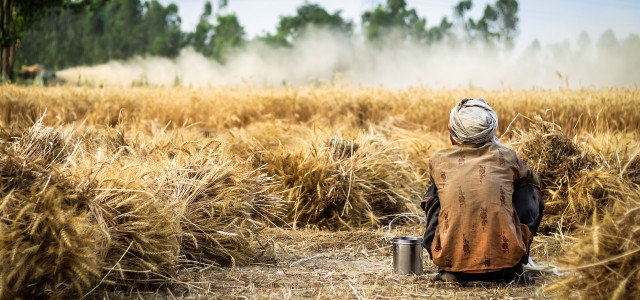Slash-and-burn agriculture is a farming practice that has existed for at least 7,000 years. When practiced right, it can be beneficial for forest and soil health, and be a sustainable means of food production.
Slash-and-burn agriculture is a seven millennia old farming technique that can act as a sustainable alternative to industrial agriculture, which is extractive and exploitative to land and communities. While slash-and-burn agriculture can also lead to deforestation and increased carbon emissions, it is still largely practiced by small-scale and Indigenous subsistence farmers.
Before discarding this practice as unsustainable, this article takes a closer look at the specifics of slash-and-burn farming.
Slash-and-Burn Agriculture Explained
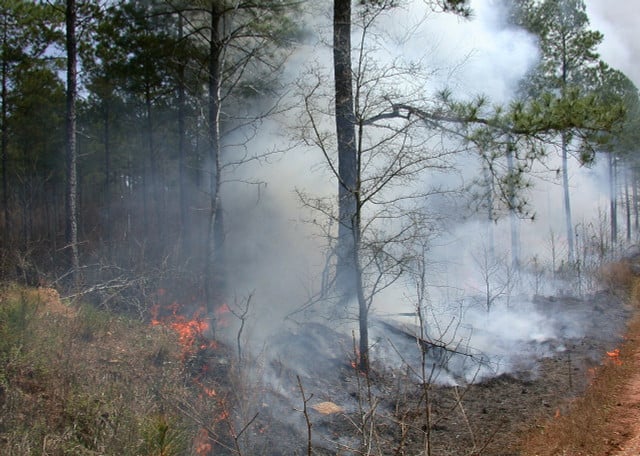


(Foto: CC0 / Pixabay / Trilogy)
Slash-and-burn agriculture is a farming method that involves the cutting, slashing, and burning of plant life in a forest or woodland area to create a field called a swidden. This type of agriculture requires a period in between burns that is long enough for the area to grow back dense and woody vegetation.
This ancient agricultural technique dates back at least 7,000 years and is one of the oldest practices of cultivation. It was adopted by hunter-gatherer societies as it allowed them to transition with seasonal migrations between hunting grounds and agricultural settlements.
The term swidden refers to the practice of burning biomass with the expectation of cultivating it, or the area of land created by it. This term is many times preferred to ‘slash-and-burn’ because of the negative connotation the latter provokes. Traditionally, slash-and-burn involves the clearing of forested areas (by slashing), and the burning of the remaining vegetation to gain a clear and neat biomass ready for the propagation of different crops. This growing of crops is said to return carbon and other nutrients to the soil from the plants.
The freshly nutrient-rich soil is usable for two to three years until the soil is exhausted. Then, a fallow period follows which allows plant life to regrow and soil nutrients to be restored. This cycle is repeated as farmers move on to new areas to slash-and-burn, as previous areas recover.
Negative Effects of Slash-and-Burn Agriculture
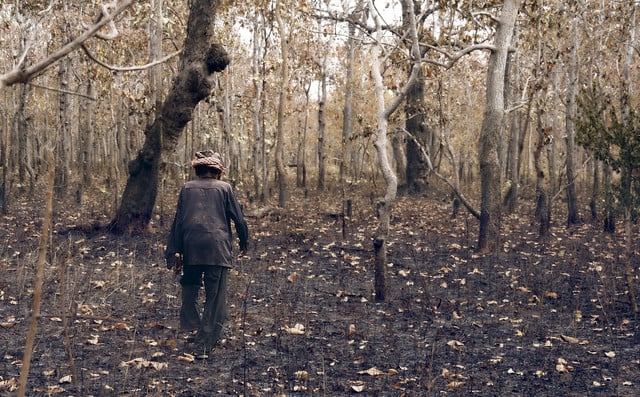


(Foto: CC0 / Pixabay / danielkirsch)
When slash-and-burn is used as an industrial form of agriculture, it can exacerbate deforestation, the destruction of biodiversity, soil, and even communities. It releases large swaths of carbon dioxide into the atmosphere. And the cultivation of slash-and-burn areas only last a few years before weeds, pests, and disease reappear, and nutrients have been washed away or used by crops.
There should be a distinction between the two processes:
- traditional slash-and-burn agriculture, which requires a regrowth period to maintain these cycles of cultivation
- more intensive type of agriculture that uses slash-and-burn techniques, which results in a forest’s inability to establish itself with fallow periods that are too short
While the term slash-and-burn agriculture is often loosely used to refer to the second process, this is not how slash-and-burn has existed in traditional societies. When discussing slash-and-burn, it should always be specified which practices and which timeframes are meant.
Different variables such as humidity and weather patterns affect the amount of time a field can hold nutrients before it must be abandoned, but the research on this is not conclusive. Most estimates say an area can only maintain enough nutrients to grow crops for two to three cycles and requires a minimum of ten years to recover.
Next to animal agriculture, intensive farming which uses slash-and-burn techniques without proper fallow periods is a major contributor of greenhouse gas emissions.
Advantages of Slash-and-Burn
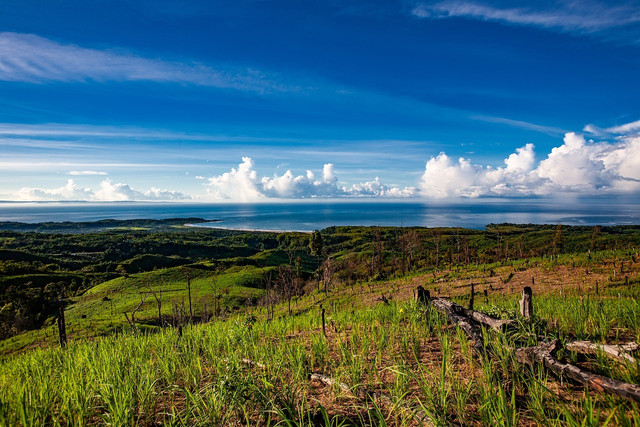


(Foto: CC0 / Pixabay / Kanenori)
At first glance, slash-and-burn agriculture appears to be a destructive and invasive practice. This can indeed be true when the technique is practiced wrong. Slash-and-burn has a poor reputation because of the influence of industrial agriculture, which seeks to exploit the land without consideration for its health or local populations and has the potential to result in deforestation.
When practiced with patience and respect for the land, this means of cultivation can support healthy soil and biodiversity, while also maintaining the traditional practices of Indigenous groups who use this for subsistence and permit longer fallow periods. Here are several ways in which slash-and-burn agriculture can be beneficial.
- Sun exposure: First, many staple annual crops which supply food for hundreds of thousands of people in the world require full sun exposure. In order to achieve this, areas of forest have to be cleared to establish new fields. This technique offers a better controlled environment for cultivation without the threat of weeds, pests, or disease.
- New plant growth: Though the burn phase does release high amounts of carbon dioxide, this is counterbalanced by the plants inevitably grown in the burn area. Through photosynthesis, these plants will take carbon dioxide from the air and stimulate other nutrients which will be put back in the ground, thus, nourishing the soil.
- No need for pesticides and fertilizers: Another benefit of slash-and-burn agriculture is that the burning of the earth results in nutrient rich deposits in the soil in the form of ash. This is beneficial for the future crops that will be grown in the healthy soil. This means that the use of synthetic pesticides and fertilizers is not required on the fields, and therefore will not pollute the surrounding environment.
- Polyculture or intercropping: Contrary to popular belief, a variety of crops can be grown in slash-and-burn fields depending on the size of the field and the surrounding vegetation. Plants that are shade tolerant can be grown on the outside and plants which require a full day of direct sunlight can be placed in the center of the field. This is superior to the highly intensive agricultural practice of mono-crops which have been popular means of food production in agriculture since the agricultural revolution of the 1950s. Mono-crops are more damaging for soil and are destructive to forests as huge plots of land are cleared for this form of agriculture.
Sustainable Slash-and-Burn
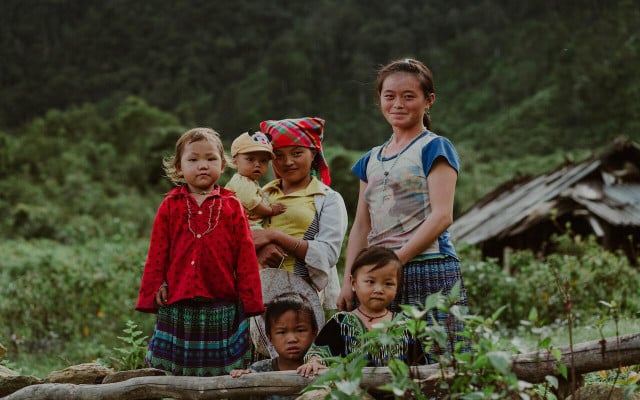


(Foto: CC0 / Unsplash / Lê Tân )
Slash-and-burn farming is still commonly used by small-scale subsistence farmers in forested mountainous regions of the world in places such as Southeast Asia, Latin America, and Central Africa. It is indeed still possible to practice this type of agriculture sustainably by leaving tree stumps in place, which prevent erosion, enable microbial environments, and help nourish the soil. By forgoing machinery and not tilling the soil, the ground can remain healthy and ecosystems can stay intact.
Fallow cycles should be permitted with long enough breaks to permit vegetation to regrow, thus nourishing the biodiversity of the land. Through these practices — which encourage symbiosis among the different plants, fungi, and organisms that are reliant on the soil — the environment is more likely to prosper. That is, as long as a proper transitional period between slashes and burns are permitted.
Moreover, more sustainable practices such as adding compost and ash to the soil can be adopted within this kind of cultivation to increase the ability for the land to recover faster.
To combat climate change in tandem with sustainable agriculture, forest preservation should be consistent with the needs of local populations. People that are directly affected by the degradation of forests are rarely included in conversations or decision-making about mitigating climate change and preserving biodiversity.
Slash-and-burn-agriculture is still central to almost half a billion people across 64 low- and middle-income countries and provides food security and income for many. Almost all slash-and-burn is practiced on small farms, and by Indigenous people whose areas, according to the International Fund for Agricultural Development (IFAD), hold 80 percent of the globe’s remaining biodiversity.
Read on:
- What Are CSA Farms? A Guide to Community Supported Agriculture
- Vertical Farming: Taking Agriculture to New Heights
- Neither Nestlé nor Monsanto: This Is the Worst Company in the World
Do you like this post?






